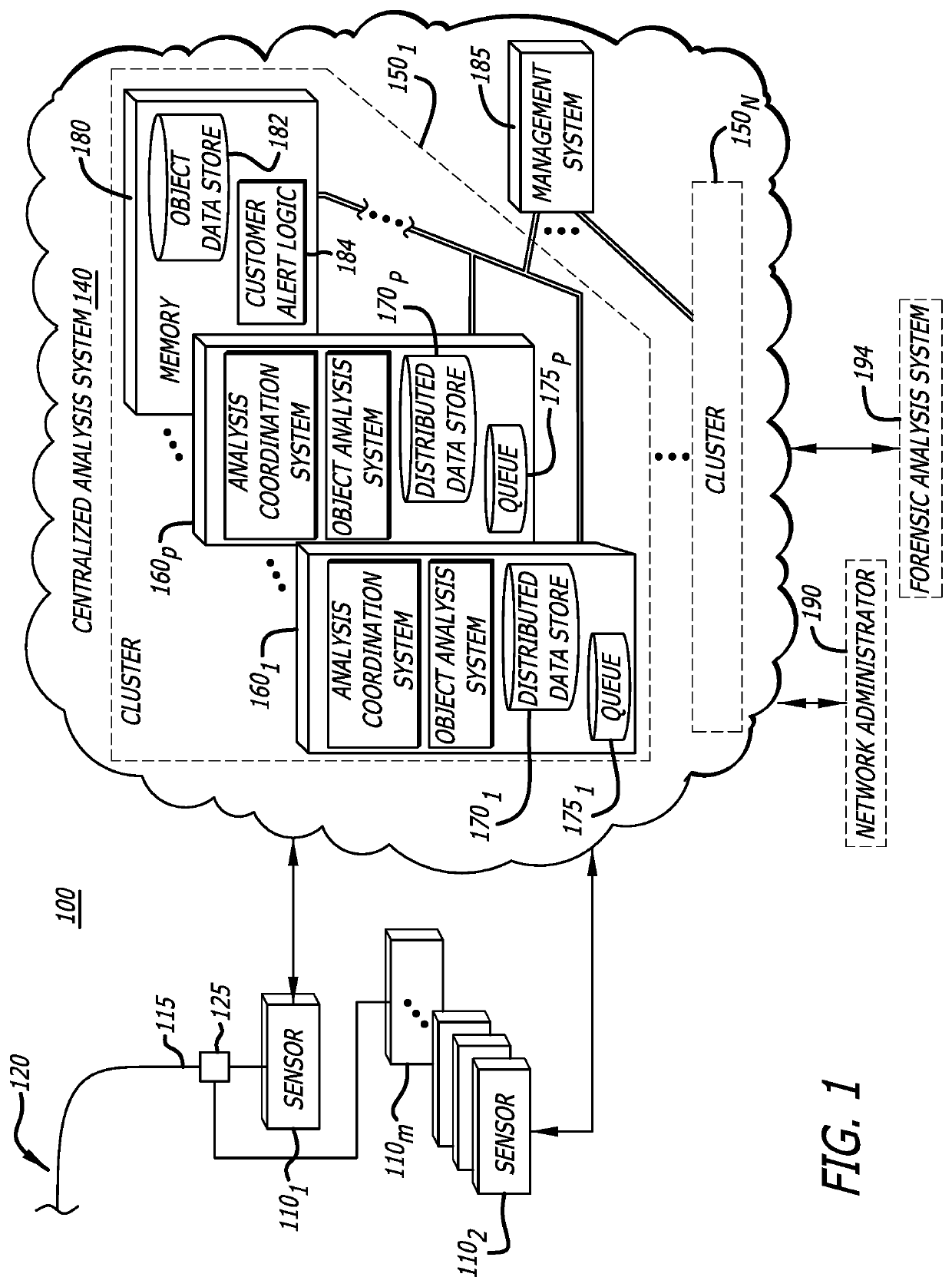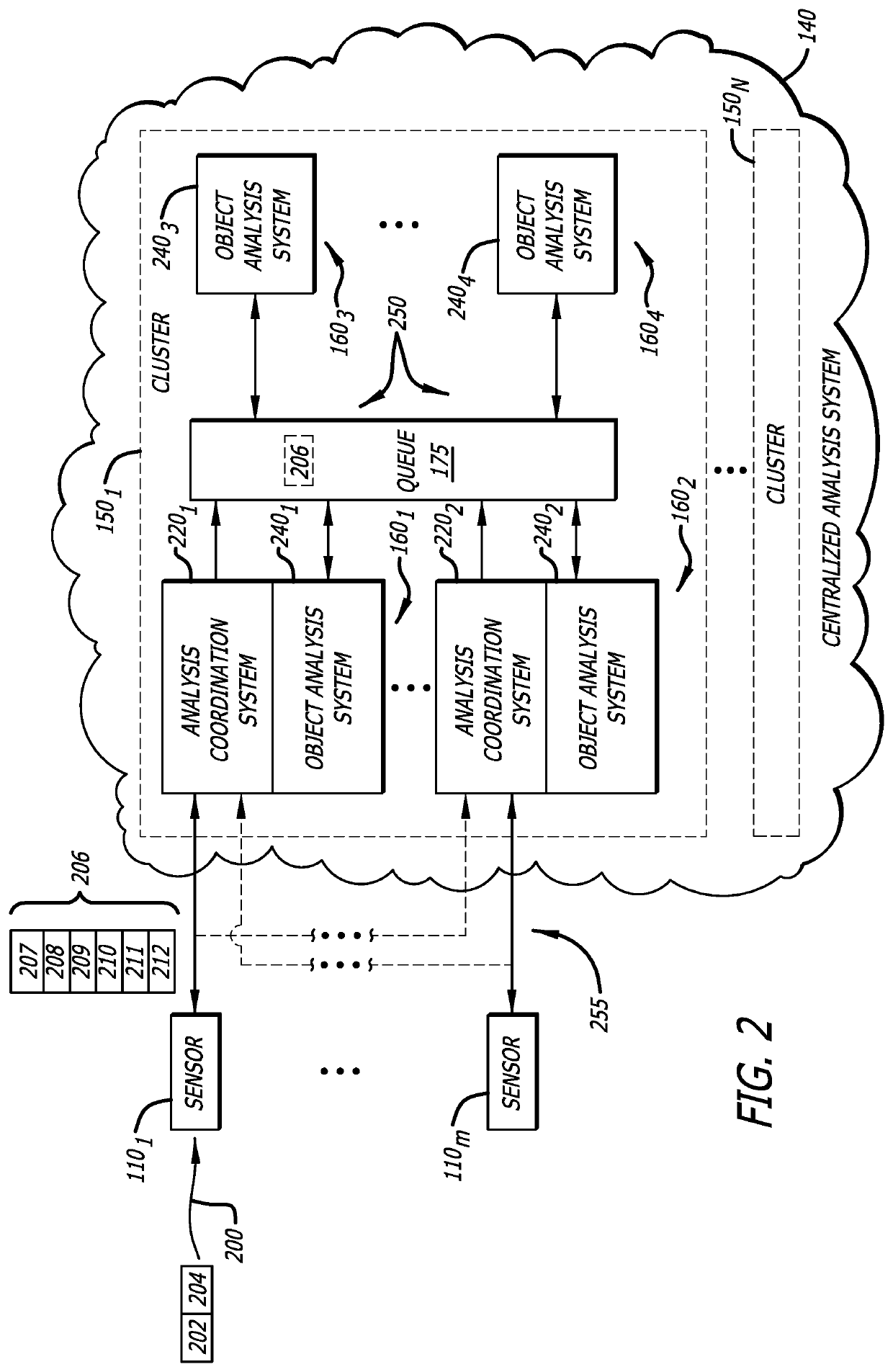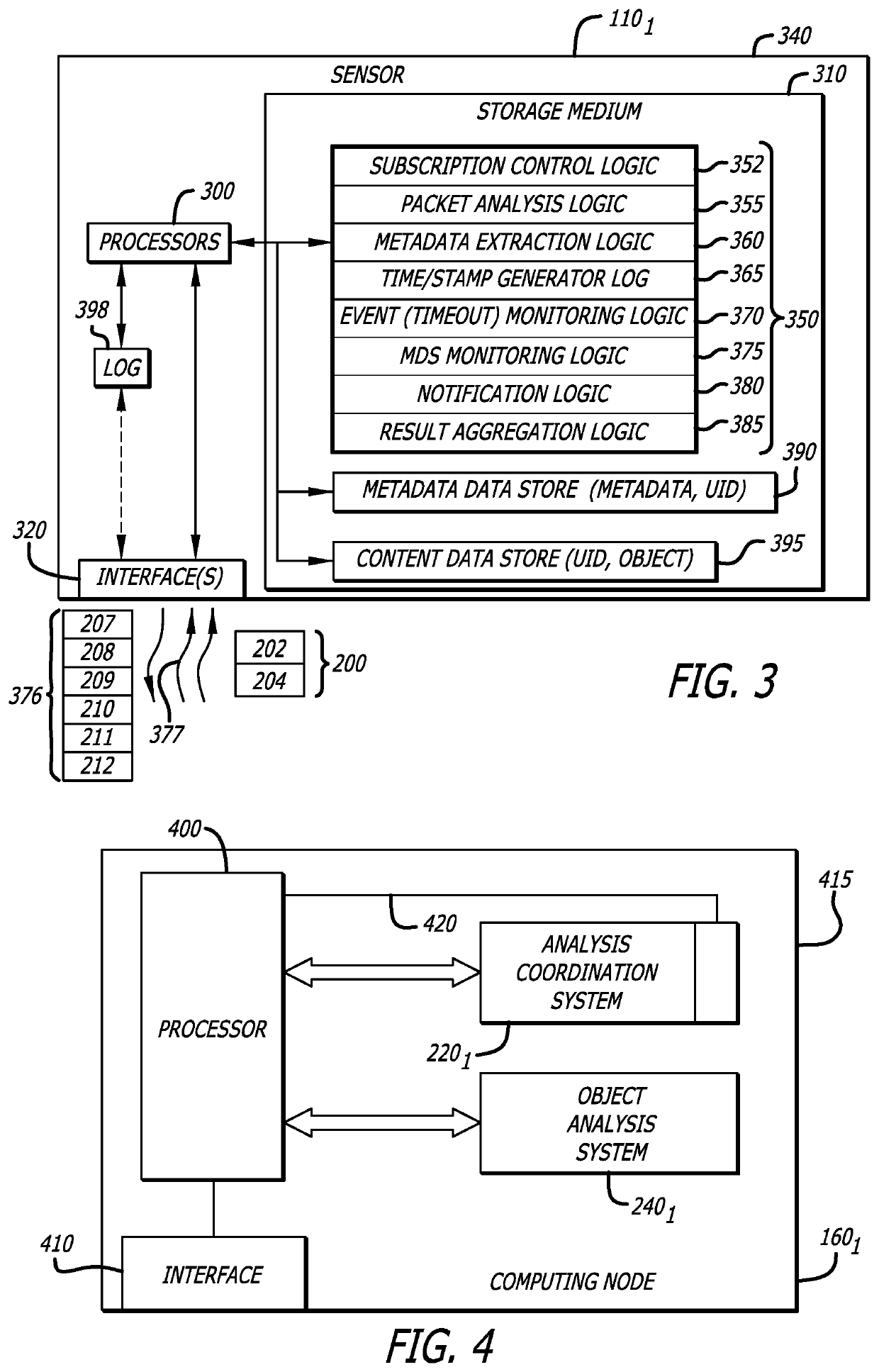Distributed malware detection system and submission workflow thereof
a malware detection and distribution system technology, applied in the field of cybersecurity, can solve the problems of insufficient approach, resources subjected, and cybersecurity attacks becoming a pervasive problem for internet users,
- Summary
- Abstract
- Description
- Claims
- Application Information
AI Technical Summary
Benefits of technology
Problems solved by technology
Method used
Image
Examples
Embodiment Construction
[0030]Embodiments of the present disclosure generally relate to a scalable, distributed malware detection system including sensors deployed for retrieving information from network traffic that communicate with a malware detection cluster (referred to as “cluster”). Each cluster is a scalable architecture that includes one or more computing nodes, where each computing node is responsible for detecting malware associated with a portion of the information retrieved by the sensor. The results of a malware analysis, which is performed on the portion of the retrieved information, are provided to the sensor. The sensor is configured to locally store some of the malware analysis results, where some or all of the malware analysis results are sent from the sensor to a management system. The management system may distribute these results to other destinations, such as other clusters to assist in malware detection or a forensic analysis system for more in-depth analysis of the retrieved informa...
PUM
 Login to View More
Login to View More Abstract
Description
Claims
Application Information
 Login to View More
Login to View More - R&D
- Intellectual Property
- Life Sciences
- Materials
- Tech Scout
- Unparalleled Data Quality
- Higher Quality Content
- 60% Fewer Hallucinations
Browse by: Latest US Patents, China's latest patents, Technical Efficacy Thesaurus, Application Domain, Technology Topic, Popular Technical Reports.
© 2025 PatSnap. All rights reserved.Legal|Privacy policy|Modern Slavery Act Transparency Statement|Sitemap|About US| Contact US: help@patsnap.com



